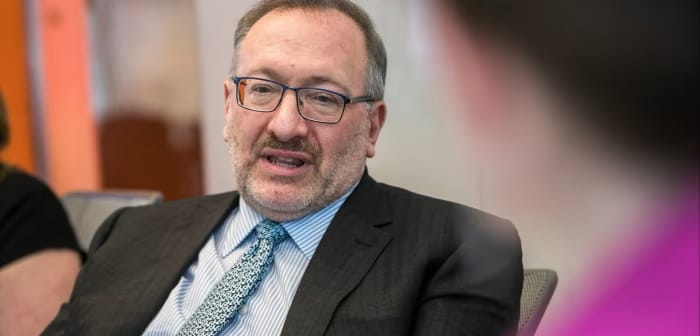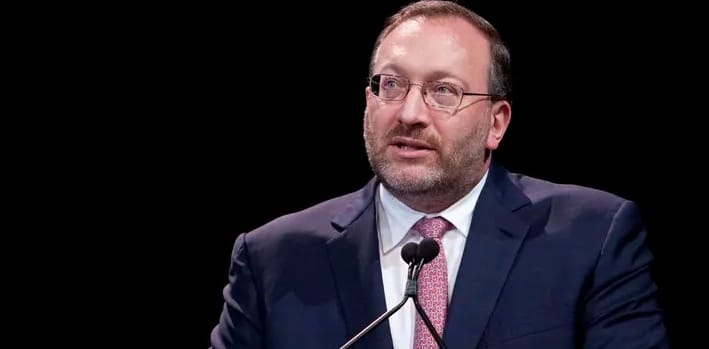- Investor Briefcase
- Posts
- The investor who profited from crises
The investor who profited from crises
How Seth Klarman made billions buying what everyone else was selling
Seth Klarman studied under value investing legends, launched his hedge fund quietly in 1982, and went on to build one of the most consistent and respected track records in the industry. While others rushed into tech bubbles or momentum trades, he made his fortune buying distressed debt, bankrupt bonds, and panic-driven assets.

This week, we break down how Klarman built Baupost into a $30 billion hedge fund, why his approach to crisis investing still matters:
🏛️ Baupost and Klarman’s investing foundation
📚 A playbook for distressed opportunities
🧠 Why Klarman’s strategy still matters today
— Investor Briefcase Team



Seth Klarman graduated from Cornell, earned his MBA from Harvard Business School, and went to work for Max Heine and Michael Price, two of the most disciplined value investors in the country. In 1982, with support from a handful of wealthy families, he co-founded The Baupost Group with $27 million under management and a mandate of protecting capital and growing it conservatively.
From the start, Klarman avoided the trap of short-termism. He believed the job of an investor was not to predict the next market move but to survive over the long haul. That required patience, risk aversion, and the ability to think independently.
He was influenced heavily by Ben Graham’s ideas and Warren Buffett’s discipline, but his interpretation was uniquely his own. He was obsessed with downside protection, demanded a clear margin of safety in every investment, and saw price volatility not as a risk but as an opportunity.
“In investing, the key to success is survival.”
Even in the early days, Baupost was selective, contrarian, and unusually cautious. Klarman passed on deals that didn’t feel right and held cash when there was nothing worth buying. That discipline became a signature trait.



Where Klarman stood apart was in how he handled market chaos. While most investors panic when prices collapse, Klarman went shopping.
He focused much of his career on distressed investing, buying mispriced securities when others were desperate to get out. That meant picking up bonds of bankrupt companies, mortgage-backed securities during housing crashes, or assets trading at pennies on the dollar because of forced liquidation.
In the early 2000s, Baupost bought deeply discounted Enron bonds after the company collapsed. During the 2008 financial crisis, they purchased mortgage securities when the entire housing market was in freefall. Klarman didn’t need to know when the market would recover. He only needed to know that the price was wrong and the panic was temporary.
His approach was methodical. He did deep research, waited for massive dislocations, and bought into positions that looked toxic to the rest of the market. That’s how he consistently found value in places no one else would touch.
“The best bargains are often the ones no one else wants to touch.”
In 1991, he published Margin of Safety, a book now regarded as one of the rarest and most sought-after works in value investing. In it, he wrote about how most investors confuse risk with volatility and how true investing means being willing to look foolish in the short term if the long-term case is strong.
Today, Baupost still operates with that same mentality. They focus on asset mispricing, not quarterly earnings. They go deep on research, avoid crowded trades, and lean into fear.

Sponsored by Boxabl
A New Chapter in Home Construction
And it has 40,000+ investors excited about BOXABL. Their houses fold up and deliver, then set up in hours. How? They brought assembly-line manufacturing to housing, rolling new homes off the line in ~4 hours. Now, BOXABL’s preparing for Phase 2, combining modules into larger homes and apartments – and until 6/24, you can join.
*This is a paid advertisement for Boxabl’s Regulation A offering. Please read the offering circular at https://invest.boxabl.com/#circular



In a world run by ETFs, algo trading, and daily sentiment shifts, Baupost is an outlier. It has quietly compounded capital for over four decades, with minimal public exposure and a deep focus on capital preservation.
Klarman has grown increasingly vocal about what he sees as dangerous trends in markets. He has warned about the over-reliance on passive investing, the illusion of safety in diversification, and the risk of low interest rates distorting asset prices. He believes too many investors chase returns without understanding risk and confuse bull markets with skill.
For younger investors entering the industry, Klarman’s approach offers a clear alternative. His career is a reminder that patience is not weakness, that crisis creates opportunity, and that you don’t have to predict the future if you can protect the present.
“If you don’t have the stomach for volatility, you don’t deserve the returns.”
In interviews, Klarman often emphasizes temperament over intelligence. The ability to stay rational when others are panicking. The discipline to wait for fat pitches. And the humility to admit what you don’t know.
Distressed investing is about having the mindset to act when others freeze. For anyone looking to stand out in competitive finance roles, understanding that mindset is one of the best places to start.

More Stories
Other distressed investors
> Howard Marks (Oaktree Capital): Known for his memos and calm analysis, Marks made a name buying high-yield debt and distressed assets during periods of panic. His 2007 and 2008 calls ahead of the GFC solidified his status as a risk-aware contrarian.
> Martin Whitman (Third Avenue): A deep value investor focused on balance sheet strength. He targeted distressed credits and undervalued equities with significant asset backing, often buying into complex situations overlooked by others.
> Paul Singer (Elliott Management): Famed for activist plays in distressed sovereign and corporate debt. Singer’s aggressive tactics, including suing Argentina over defaulted bonds, earned both profits and notoriety.
> John Paulson (Paulson & Co): Though best known for shorting the housing market in 2007, Paulson later moved into distressed M&A and restructuring trades, profiting from bankruptcy and special situations during post-crisis years..

Each week we profile the most notorious investment stories.
Got an idea for a story? Email us at [email protected]
